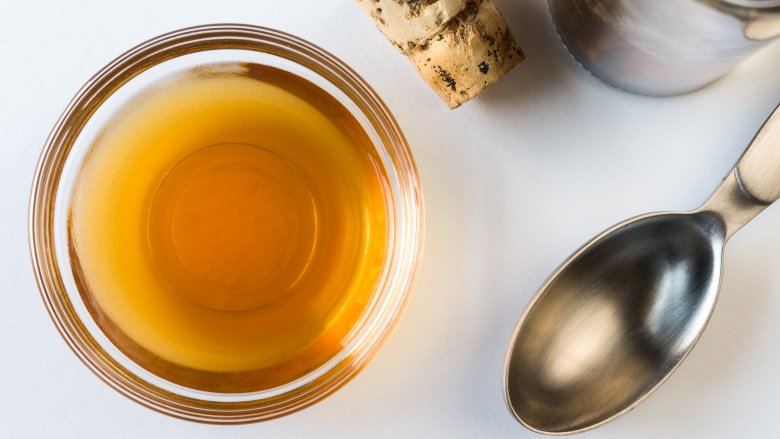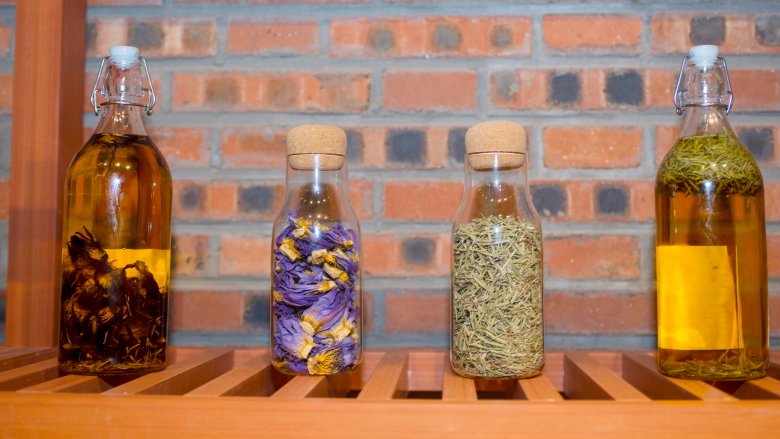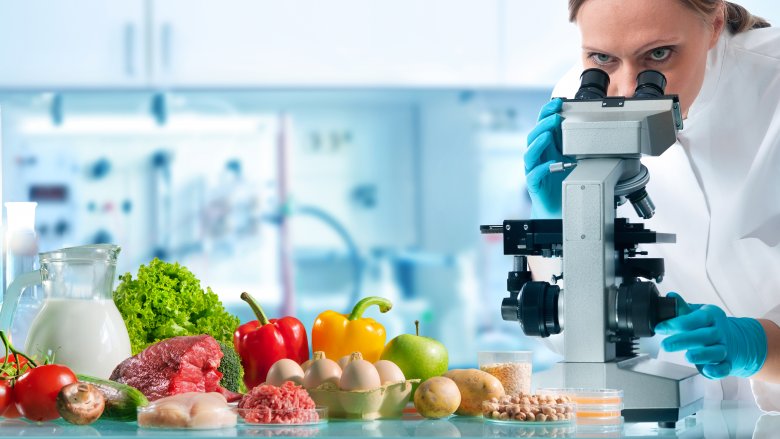The Real Meaning Of Natural Vs. Artificial Flavors
One of the first steps toward healthy eating is reading the nutrition labels on packaged foods before you add them to your cart at the grocery store. But one of the most puzzling things on the ingredient list of many foods is the inclusion of natural flavors and artificial flavors — what the heck are they, and what's the difference between the two, anyway?
As their name would imply, these ingredients are added to bring flavor to your food, but both terms are incredibly vague. If you're eating a strawberry popsicle with "natural flavors" listed, does that mean it's made with real strawberries? If it says "artificial flavors," what does that even mean? It's a little confusing, but it turns out that the two terms aren't so different after all.
What are natural flavors?
Natural flavor is the fourth most common ingredient in packaged foods in the USA (via Environmental Working Group). But what does "natural" flavor mean?
Natural flavor is usually a processed mixture of chemicals derived from plant or animal materials. They're usually developed in a lab, and they can be made from a variety of different items. For instance, McDonald's lists "natural beef flavor" in the ingredients for its French fries, but the flavor isn't made from beef — it's actually derived from wheat and milk. That means that even though "natural flavors" is listed as an ingredient on your box of strawberry popsicles, that doesn't mean that the flavor is actually derived from strawberries.
Natural flavors are more expensive than artificial, can often contain solvents, emulsifiers, and preservatives, and some say they aren't as rigorously inspected as artificial flavors. The exception is the natural flavor used in organic foods, which can't contain those additives.
What are artificial flavors?
Unlike natural flavor, artificial flavor isn't made from plant or animal materials. Instead, it's made by synthesizing different chemical compounds in a laboratory.
As an example, many fruits get their flavor and aroma from specific chemical compounds called esters. By replicating these chemicals in a lab setting, flavor scientists can create artificial flavors that are almost identical to the real thing. Sometimes, these are actually less processed than "natural" flavors, because the chemists creating them have full control over what other compounds are added to the flavor mix, meaning they may contain fewer ingredients (via How Stuff Works).
Essentially, both flavor types are additives, and even though "natural" appears on the label, it doesn't necessarily mean that the flavor comes straight from the source.


